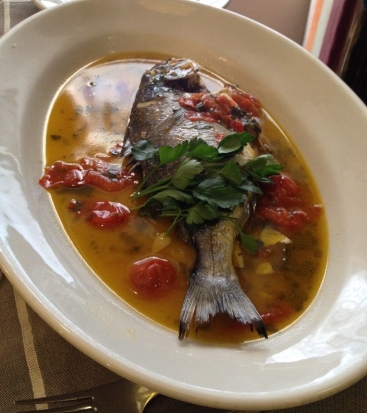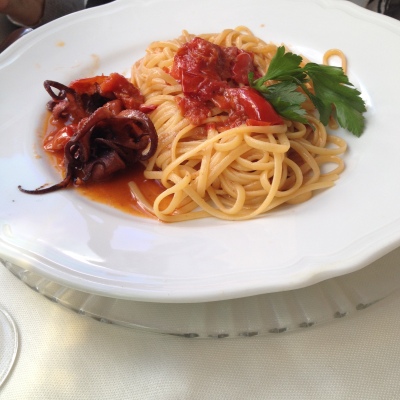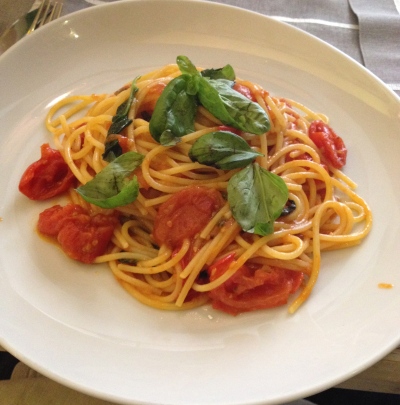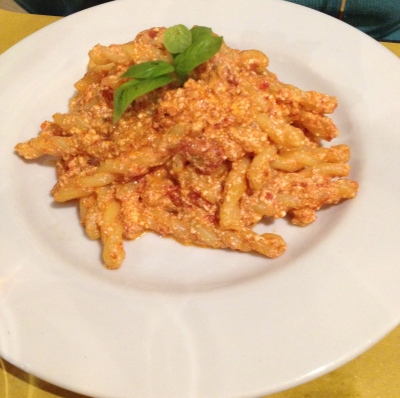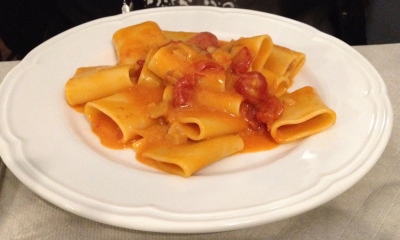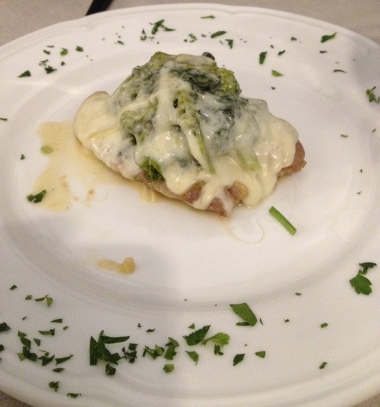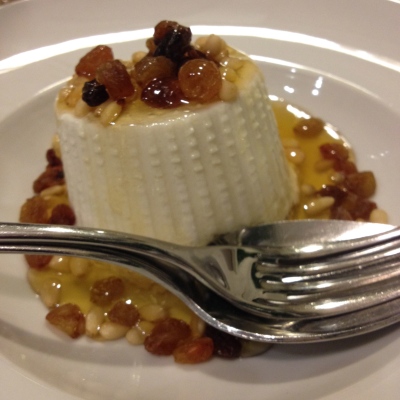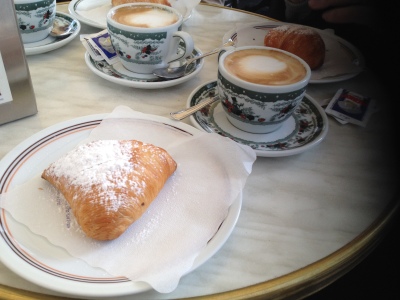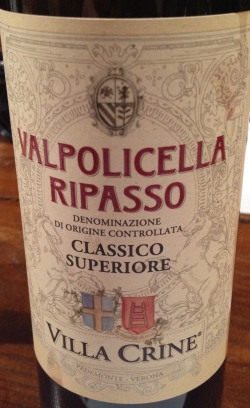Last year I was in Benevento for Campania Stories, a tasting of the wines of Campania for journalists. My friend, the wine writer Tom Hyland, introduced me to Marina Alaimo a wine and food writer from Naples and we spoke about wine and pizza. When I told her that Michele and I would be in Naples in February she said that we must contact her and we did.
Marina picked us up and took us to Haccademia, a pizzeria on via Panoramica 8 in Terzigno less than half an hour outside Naples on the way to Pompeii. Marina told us that the road that passes in front of the restaurant leads directly to the top of Vesuvio.
Maria Consiglia Izzo, a food blogger and photographer, and the sommelier Fosca Tortorelli joined us at the restaurant to sample the pizza. Marina introduced us to the owner, Aniello Falanga and his son Nicola.
Maria said Aniello is a self-taught pizzaiolo. He has devoted his attention to studying the techniques of raising and maturing the dough in order to make it more digestible and light as a cloud.
Aniello is very passionate when it comes to speaking about pizza. He is an advisor to pizza places both in Italy and abroad and taught the art of pizza making for many years. He has won many awards and is mentioned in Gambero Rosso and Slow Food Vesuvius. He even goes to elementary schools in the Naples area to teach young children how to make pizza.
Aniello began working as a pizzaiolo in 1985 and opened his own pizzeria in 1989. For 20 years he had a pizzeria in Pompei. He has just received the stamp of approval # 631 from Association Vera Pizza Napoletana which certifies authentic Neapolitan pizza.
On Thursdays and Fridays, Aniello makes a special pan pizza. For this he uses flour made of ancient varieties of grains, which he has researched.  The flour is made from variety of grain from the hills of Beneventane and is stone ground. Unfortunately, our visit was on a Wednesday so we did not get to try this pizza, though we did try several others.
The flour is made from variety of grain from the hills of Beneventane and is stone ground. Unfortunately, our visit was on a Wednesday so we did not get to try this pizza, though we did try several others.
Aniello explained each pizza that we were served.
They are all traditional Neapolitan pizza. The ingredients he uses reflect the area around Vesuvius.
Four Bocconcini di Montanara: little fried rounds of pizza dough topped with ragu of beef, baccala, tomato and mozzarella, and anchovies and burrata.
Pizza Margarita antichi pomodori di Napoli, fiore di latte di Tramonti, basilico, olio evo del Vesuvio. My favorite pizza and it was Pizza Margarita at its best.
Pizza with winter quash, guanciale, pumpkin seeds and mozzarella. Michele and I have never had a pizza before with this topping and it was so good.
Pizza Luisella: scarola Napoletano, fiore di latte Tramonti, olive nere itrane, capperi di Salina, alici di Cetara, pinoli tostati e olio di Vesuvio. This may have been Michele’s favorite because in contained all the flavors of Campania and was so fresh tasting.
Montanara mozzarella, tomato and basil-topped fried pizza at its best. Aniello told us that after frying the dough and adding the toppings, he places it briefly in the oven to melt the cheese and enhance the crispness.
Pizza fritta with ricotta and ciccoli di maiale. This was so light it was difficult to tell it was fried, and the filling was creamy and well seasoned.
The first wine we drank was selected by Fosca and the second by Marina
Fosca suggested we start with the Caprettone Spumante Method Classico 100% Caprettone from Casa Setaro. This was an excellent choice. I met Massimo Setaro in Rome last October. See https://charlesscicolone.wordpress.com/2016/10/10/a-taste-of-vesuvius-in-rome-casasetaro-winery/
Lacryma Christi del Vesuvio Rosso “Vigna Lapillo” Sorrentino made from 80% Piedirosso and 20% Aglianico. Marina picked this wine because the winery is only a few minutes away and we were going to visit it after lunch.
Before we left, Aniello insisted we try his Baba au Rhum. Not too sweet, it was surely the best version of this dessert I have ever eaten and great way to end a wonderful lunch.











